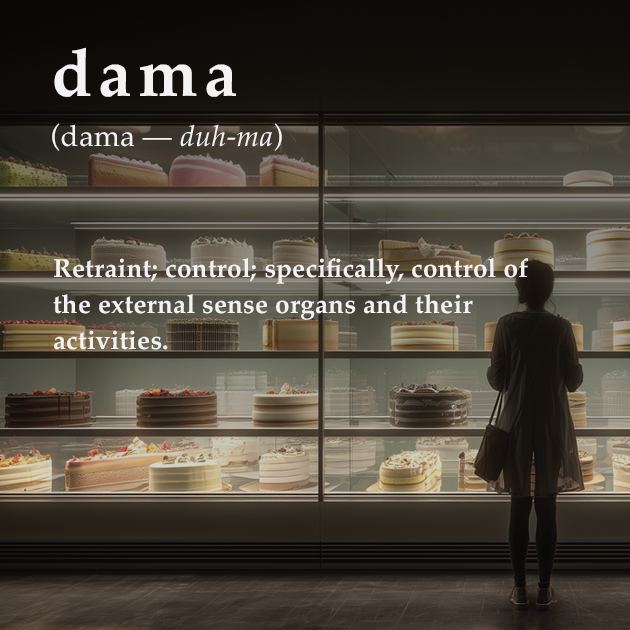Dama - Restraint of the Senses
- Daniel McKenzie

- Sep 12
- 2 min read
Updated: Dec 11

In Vedanta, dama means control of the external sense organs — the eyes, ears, tongue, skin, and nose, as well as the organs of action such as speech and hands. It is part of the sixfold inner wealth (shatka-sampatti), one of the qualifications required for Self-knowledge.
If shama (mind control) is the first line of defense, dama is the second. Desires and emotions may arise suddenly, and sometimes the mind cannot deliberate quickly enough. In such cases, dama provides restraint, preventing the senses from acting out and creating fresh entanglements. For example, anger may surge in the mind, but with dama one refrains from speaking harsh words.
Traditional analogies describe the senses as wild horses that constantly rush toward their objects. Left unchecked, they scatter the mind and disturb inner peace. Dama reins them in, ensuring that they serve inquiry rather than sabotage it.
Swami Dayananda Saraswati clarifies that one need not suppress or deny desires altogether — they arise according to one’s prakriti (nature). But one need not be enslaved by them either. Through shama one deliberates whether a desire is necessary, proper, or useful; through dama one exercises restraint even when the desire pushes strongly. In this way, dama works hand-in-hand with śama to protect the mind from being hijacked by impulses.
At a societal level, dama is reflected in civility and moral education: the capacity to restrain destructive impulses for the sake of harmony. For the seeker, it is a vital discipline, transforming the senses from masters into servants of Self-inquiry.
Root & Meaning
Dama = restraint, control.
Specifically: control of the external sense organs and their activities.
Scriptural References
Aparokshanubhuti (v. 6): “Restraint of the external functions of the organs is called dama.”
Bhagavad Gita (6.5; 17.14–16): speaks of self-mastery and restraint as part of discipline.
Tattva Bodha (Shankara): lists dama as one of the sixfold inner disciplines.
Traditional View
Dama restrains the outward flow of the senses.
Complements shama (control of the mind), working together to keep both inner and outer life steady.
Cultivated through moderation, deliberate living, and prioritizing Self-knowledge over indulgence.
Vedantic Analysis
Shama and dama are two aspects of handling desire:
Shama = regulating thoughts before they disturb.
Dama = restraining sense organs when impulses escape shama’s filter.
Both disciplines aim to neutralize raga-dvesha (likes and dislikes) and free the mind for inquiry.
Not repression, but intelligent restraint: the ability to say, “Thus far and no further.”
Common Misunderstandings
That dama means harsh suppression: In Vedanta it is moderate restraint, not denial.
That dama makes life joyless: In fact, it protects joy by preventing the turbulence caused by unchecked indulgence.
That dama is independent of shama: Without mental control, sensory restraint becomes brittle; without dama, shama has no support.
Vedantic Resolution
Dama is self-mastery at the sensory level. By holding back impulses before they spill into action, it preserves the mind’s clarity and safeguards Self-inquiry. It is the discipline of turning the senses into allies rather than saboteurs.
